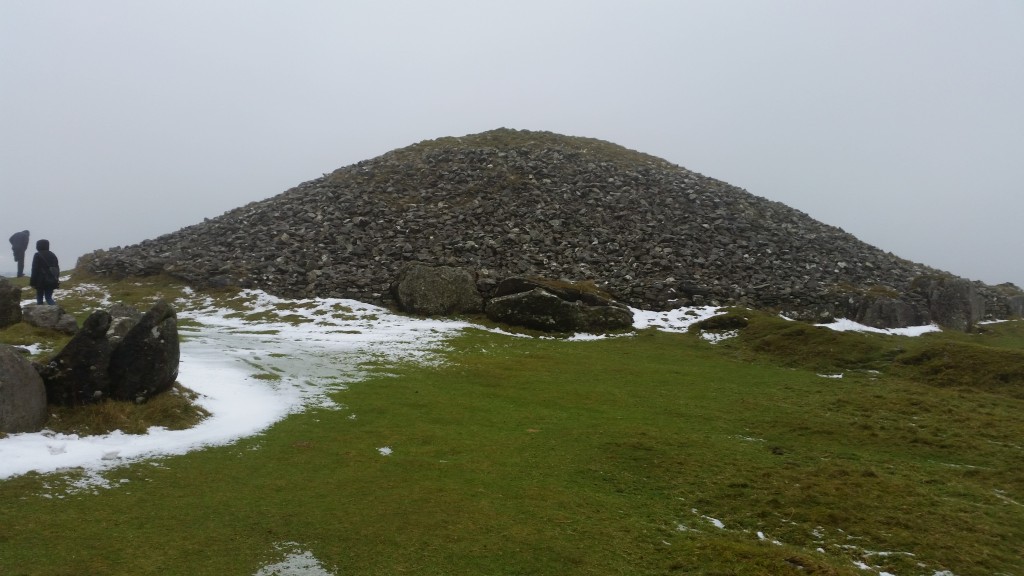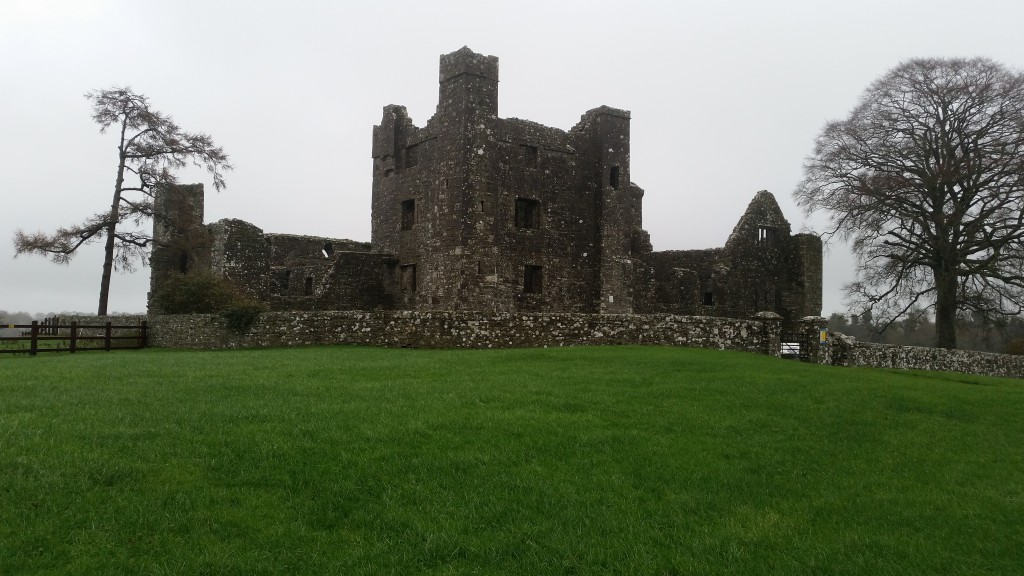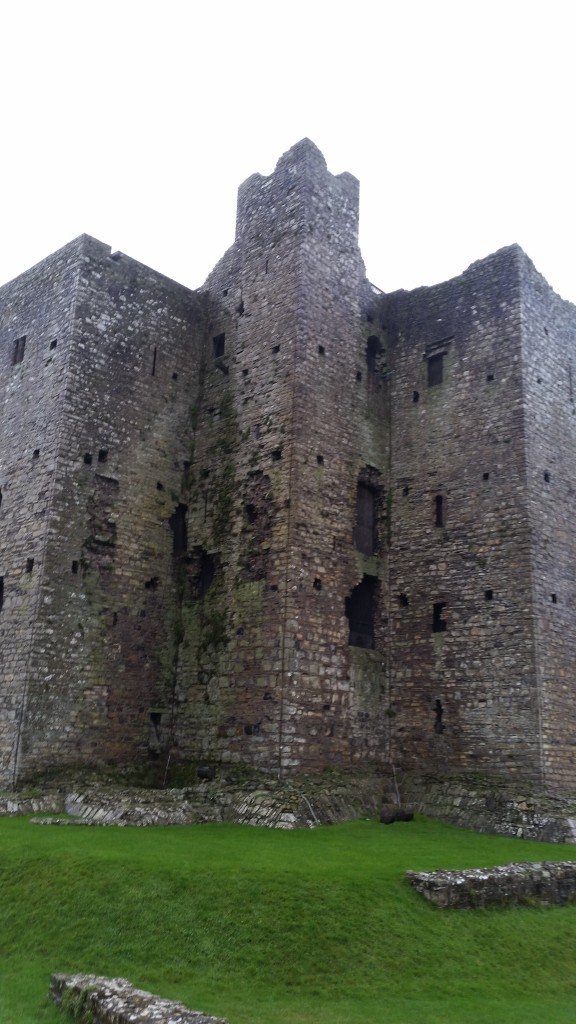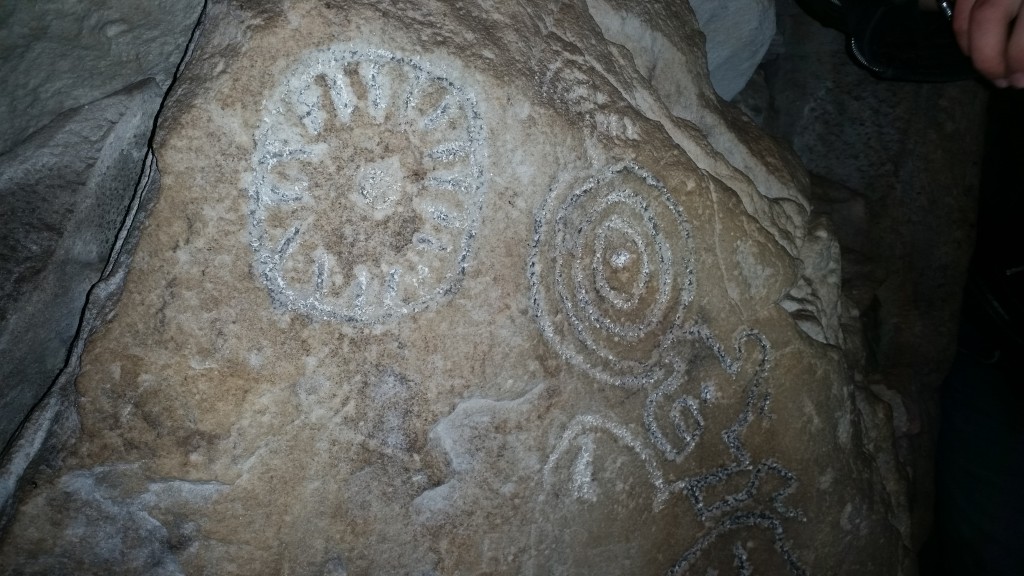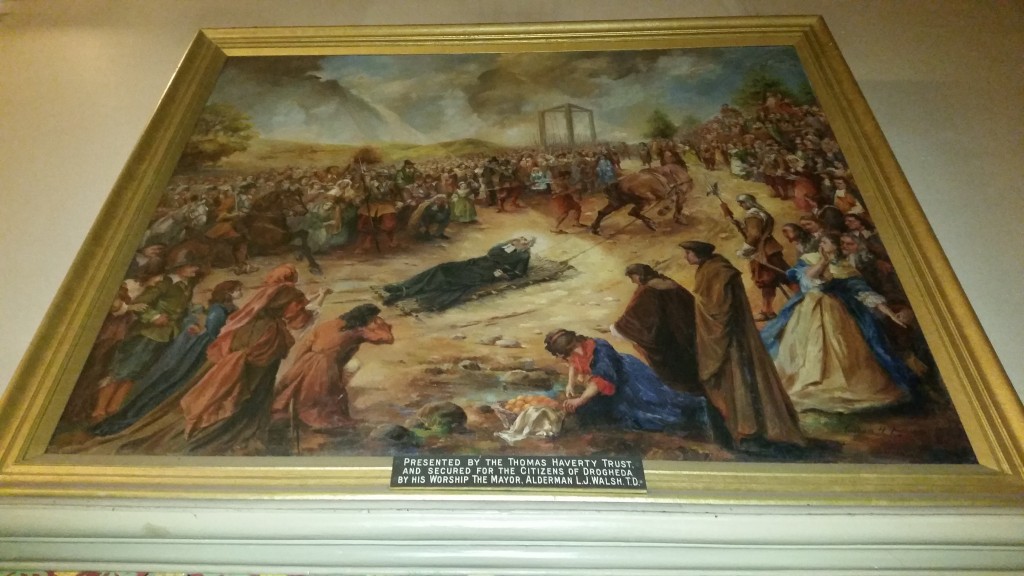A Day in The Boyne Valley – Hill of Tara, Bective Abbey, Trim Castle, Loughcrew and Monasterboice,
As somebody who has lived all their life in the heart of the Boyne Valley this was one tour I was particularly looking forward to going on. Down through the years I’ve been to all of the sites on this tour before, but never all of them in the one day. What is also great about this tour is the time scale it takes you through, from Prehistoric Ireland at Loughcrew and the Hill of Tara, through to Early Christian and Medieval Ireland at Monasterboice and Trim Castle respectively before concluding at the urban settlement of Drogheda.
The tour began in the cold, dark and wet surroundings of Dublin City Centre, as the rain that has battered Ireland for the last few weeks just didn’t seem to give us a break. Before our departure we were warned that today was going to be a wet tour so be prepared! From the city centre it was through the Phoenix Park, onto the M3 and into County Meath. Because it is the home of the Hill of Tara the nickname for Meath is the Royal County, as it was at Tara that Ireland’s High Kings were inaugurated. The weather didn’t ease off when we we got off the bus at Tara and within seconds we were drenched! What made things worse was that runners that were meant to be waterproof were not waterproof after one step onto the hill! We made our way over to the Mound of the Hostages where our guide, Macdarragh, told us it was about 5,000 years old and was an example of a passage tomb, a type of stone age tomb. From the Mound of the Hostages we made our way over to the Lia Fail, the stone of destiny! Macdarragh explained that whoever touched the stone would be High King if it roared out and that High Kings used to deal with would-be kings by getting them to touch the stone (knowing it didn’t actually scream)! Due to the horrible weather as soon as Macdarragh finished talking about Tara we legged it back to the coffee shop and some heat, it also gave me some time to ring out my socks!!!
After our short break it was back on the bus for our next stop, Bective Abbey. Bective Abbey was the site for some footage in the movie “Braveheart” and that one of Macdarragh’s got a job as an extra in the film. As a local of the area I can say most people in Meath know somebody who was involved with Braveheart in some form or another. Bective was once a Cistercian abbey founded around 1147 by an Irish king and was the second most important abbey Cistercian abbey in Ireland until the middle of the 16th century when many of the Irish monasteries and abbeys were dissolved and shut down or sold off. The fact that we were all soaked to the bone seemed to ruin the mood, as we were in, took photos, listened to Macdarragh and we were back on board before we knew it.
From Bective we made the short trip over to Trim Castle. We passed a GAA pitch on the way and Macdarragh was quick to tell us about Gaelic football and hurling. He then went through the most successful football teams in the country and he pointed out that Meath had 6 All-Ireland titles, but I was quick to remind him we had 9 titles! As we made our way into Trim the castle emerged out of the rain and mist, towering above the river Boyne. Macdarragh gave us a quick overview of the castle in the grounds pointing out some interesting features as well as explaining that the phrase “stinking rich” came from medieval times when the nobles would hang their clothes over their toilets which allowed the ammonia to kill all the germs in their clothes! They were alive but they were stinking!
After Trim we had a bit of a drive ahead of us which gave us time to dry off after 3 hours or so in wet conditions! We drove through a Gaeltacht region on the way to our next stop at Loughcrew. A Gaeltacht region is where Irish is spoken as a first language by most of the population and they are even given funding by the state to keep the language alive in the area. Loughcrew also goes by the name “Slighe na Caillighe” or “Hill of the Witch”. According to legend the cairns at Loughcrew were created by a witch jumping from hill to hill dropping stones as she went. The stones became the cairns we see today. Archaeologically they were constructed during the Stone Age about 5,000 years ago. We got to go inside Cairn T and have a look around the chamber, admiring the Stone Age artwork that to this day nobody really knows why it was put there. The view was amazing from the summit in all directions. Apparently you can see 6 Irish counties from the summit! When we got back to the bottom we went to the Loughcrew coffee shop for a spot of lunch.
After drying off in Loughcrew we boarded the bus for Monasterboice, an Early Christian site. We drove through Ballinlough and Kells on the way to Monasterboice and as we made our way there Macdarragh told us his stories about growing up in Ireland and talking about Irish history from medieval times to the present day. As we approached Monasterboice he asked us why we thought the roads were so windy? Apparently back when cattle had to be moved along in large groups they would always walk around obstacles, big or small, and these tracks became the Irish word for road which is “bóthar” which comes from the Irish word for cow “bó”. Monasterboice was founded by St Buithe in the early 6th century and the name comes from “Mainistir Buithe” which means the monastery of Buithe. Nothing remains of the 6th century but there are the remains of two stone churches and a round tower. But the star attraction of this site is the two magnificent high crosses. The cross of Muirdeach tells the story of the bible using images while the other one is the tallest in Ireland. Macdarragh told us that the round tower may not have been used as a place of refugee as people once believed, but a storage facility combined with a bell tower and a beacon.
Our final stop was the town of Drogheda and St Peter’s Church. As it was dark at this stage we just did the church for our tour and Macdarragh told us a little bit about St Oliver Plunkett and how he became the most important Archbishop in Ireland before he was found guilty of treason on made up charges and executed. His head is now in the church along with some of his bones and the door from his cell while he was incarcerated in London. From St Peter’s it was back on the bus and back to Dublin.
I highly recommend the Boyne valley day tour!

